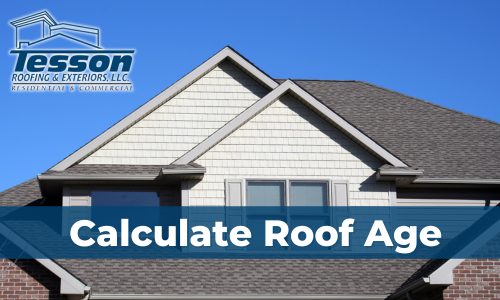our roof, a vital shield protecting your home, undergoes wear and tear over the years. Determining its age is crucial for maintenance and future planning. If you’ve moved into a new home or lost track of your roof’s installation date, fear not! Calculating its age is easier than you think. In this article, we’ll guide you through the process step by step.
1. Consult Your Home Records:
The most straightforward method to find your roof’s age is to check your home records. Look through:
a. Purchase Documents:
Your purchase agreement or documents provided by the previous homeowner might contain information about the roof’s installation date.
b. Home Inspection Reports:
If you had a home inspection, the report should mention the approximate age of the roof. Home inspectors often estimate the age based on the roof’s condition and materials.
2. Examine the Roofing Materials:
If you’re unable to find records, examining the roofing materials can provide clues:
a. Asphalt Shingles:
Asphalt shingles usually last 20-30 years. If your roof has a single layer of shingles, you can estimate its age based on this lifespan.
b. Metal Roofing:
Metal roofs have a longer lifespan, often ranging from 40-70 years. If you have a metal roof, it might be a relatively recent addition if your home was built within the last few decades.
c. Wood Shakes or Shingles:
Wood shakes or shingles tend to have a lifespan of around 20-30 years. If your roof has a rustic wooden appearance, it’s likely nearing the end of its lifespan if it hasn’t been replaced.
3. Ask the Professionals:
If you’re uncertain about your calculations or if your roof has multiple layers or unique materials, consulting a professional roofing contractor is a wise step. Roofing experts can inspect your roof, assess its condition, and provide a more accurate estimate of its age.
4. Check for Signs of Aging:
Roofs often show visible signs of aging, such as:
a. Curling Shingles:
Shingles that are curling or buckling indicate weathering and aging.
b. Missing Granules:
Asphalt shingles losing granules are a sign of deterioration, common in older roofs.
c. Sagging or Uneven Areas:
Sagging or uneven areas could indicate structural issues, possibly linked to an aging roof.
d. Visible Wear and Tear:
Cracked, damaged, or visibly deteriorating materials suggest an aging roof.
By considering these factors, consulting records, examining materials, and observing visible signs of aging, you can estimate your roof’s age with reasonable accuracy. Keeping track of your roof’s lifespan is essential for planning maintenance, repairs, and eventual replacements, ensuring your home remains protected for years to come.
